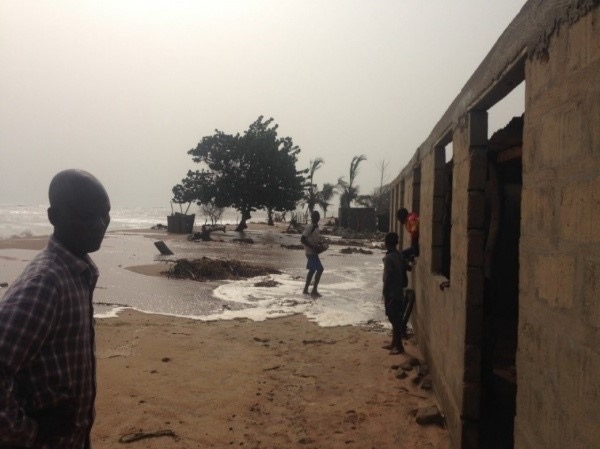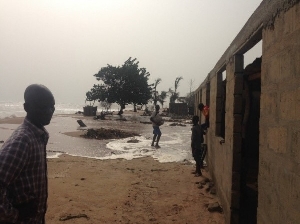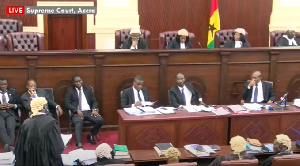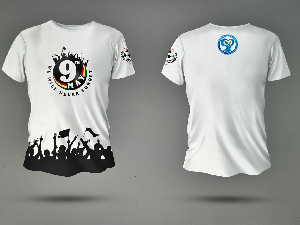Opinions of Friday, 2 February 2024
Columnist: Candy Darkwa
Wetlands, not Wastelands; conserving Keta Lagoon to mitigate climate change and enhance human well-being
Wetlands are fragile ecosystems yet of high biodiversity importance. They form part of the marine ecosystem and are essential for preventing coastal erosion, water filtration, provision of shelter from storms, and serve as a habitat for a variety of threatened and endangered species such as crocodiles, marine turtles, crustaceans etc.
Their positive contribution to several ecosystems and their continued degradation and loss due to many factors, especially in urban areas, has become a cause of concern for various stakeholders.
This article explores the importance of wetlands, highlights the state and potential of the Keta Lagoon in Ghana and suggests ways for sustainable management.
Wetlands are basically areas where water meets land.
Africa's wetland ecosystems span approximately 131 million hectares, encompassing diverse habitats such as mangroves, peatlands, marshes, rivers, lakes, deltas, floodplains, flooded forests, rice-fields, and coral reefs.
These ecosystems play a crucial role in providing various benefits to local communities. According to Oscar et al, 2023, wetlands in Africa continue to decline drastically in surface area and water quality, thus the need to expedite efforts to promote sustainable pathways to balance the development of wetlands for sustaining livelihoods with conservation and maintenance of ecosystem services, such as improvement of water quality and biodiversity.
The case of wetlands degradation experienced across the continent is not different in Ghana.
Ghana recognizes three main types of wetlands constituting about 10% of the country’s total land cover . These are marine/coastal, inland, and man-made wetlands.
According to the Ramsar Convention, wetlands encompass areas like marshes, fens, peatlands, or water, whether natural or artificial. As we reflect on wetlands and human wellbeing today, it is crucial to spotlight the Keta Lagoon Ramsar Site.
The Keta Lagoon Ramsar site was designated as such in 1992. It is located in the Volta Region, about 140 kilometers east-northeast of Ghana's capital city and lies east of the Volta estuary.
The KLCRS is made up of numerous small islands and a series of salinity-varying lagoons. Swamps, scrublands, and mangrove forests dominate the landscape and are extensively used by the local people for fuelwood and commercial fishing to support the livelihoods of (CBD, 2010).
The site holds immense potential. We depend on the lagoon complex for various ecosystem services. It offers us fuelwood, medicinal plants, and materials for traditional crafts.
Its aesthetic value also attracts visitors, supports local economies and even holds a great potential as a Nature-based Solution for mitigating and adapting to climate change related hazards.
However its current state raises concerns. The delicate balance of this ecosystem is threatened by factors such as pollution, habitat degradation, and over-exploitation of natural resources.
The degradation of the Keta Lagoon Ramsar Site poses significant threats to both its ecological integrity and the wellbeing of local communities.
Unregulated sand winning activities in and around the lagoon, pollution from agricultural runoff, pollution from industrial activities and improper waste disposal, coupled with climate change impacts, poses a risk to the delicate balance of the ecosystem.
The loss of mangrove habitats and overfishing further exacerbate these challenges, jeopardizing the sustainability of the lagoon.

A picture of a flooded community (Atiteti)
As we celebrate world wetlands day today, It is time to reflect on how this wetland can be conserved to mitigate impacts of climate change, and support rural livelihoods for human development.
Communities such as Kporkporgbor, Gbakpeygbor and Fumeni have been washed away due to floods from the lagoon, Agorkezdi, Atiteti, Dzita Kedzikope, Horvi appear to be next to submit to the roar of the lagoon when not managed properly.
This is a wake up call to all institutions both governmental and non governmental. Local communities should be educated on sustainable use and the importance of preserving the lagoon’s ecosystem.
Multi-sectoral collaborations between governmental bodies, non-governmental organizations, and local communities should be formed to strengthen and enforce regulations to control pollution, illegal fishing activities and develop and implement effective conservation strategies to safeguard this resource.
As we celebrate World Wetlands Day this year, let us join in efforts to promote wetland conservation for human wellbeing. The Keta Lagoon Ramsar Site stands as an intricate interplay between nature and human life.
Let’s debunk the perspective some people share on wetlands not holding any value but just a wasteland. Indeed when purpose is not known, abuse is inevitable. Let’s take proactive measures to address the threats the Keta Lagoon Ramsar site faces, we can ensure that this invaluable ecosystem continues to thrive for generations to come thus ensuring #Environmental #Sustainability.

A picture of the wetland in Kedzi
Authors: Candy Darkwa, Allan Amoako (Green Growth Africa Network)
Email: caddarkwa@gmail.com













